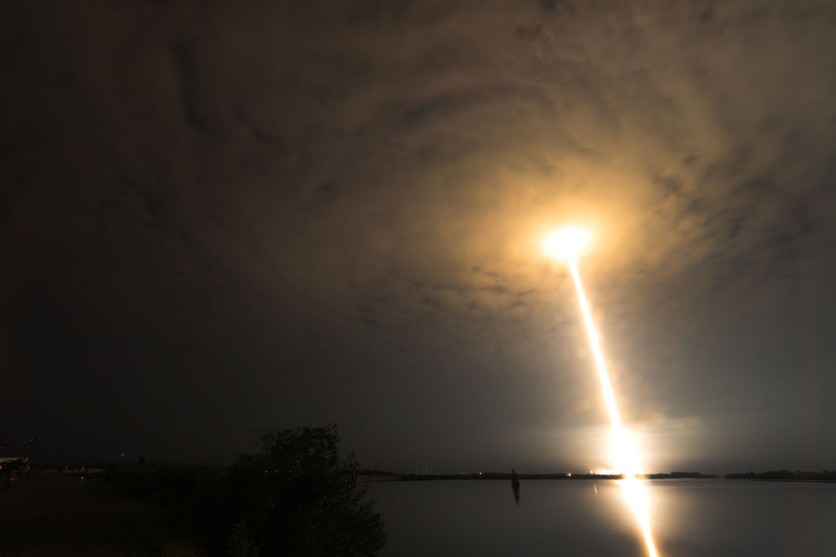Last night, stargazers in New Zealand experienced a rare treat when they saw a misty spiral over the South Island around 7:30 pm. Many people took to social media platforms to share photos. However, it seems that this is only man-made.
Hey space twitter, rocket twitter and all other spitters.
— Dooooooooooug (@Dougfest_nz) June 19, 2022
These photos were taken from Motueka and Queenstown gardens tonight at 7:30pm - do we have another space agency in NZ apart from Rocket Lab? Cc: @nzspacegovt @RocketLab @DJSnM pic.twitter.com/Yl7vWCgETM
The spiral is said to be the cause of a fuel dump that came from Elon Musk's SpaceX rocket launch.
There were similar effects like this before, such as the spiral that was spotted around the Pacific region last year on June 18. And it's likely that one now is the Globalstar 2 FM15 that passed New Zealand around that time.

(Photo : Red Huber/Getty Images)
CAPE CANAVERAL, FL - MAY 6: (EDITORS NOTE: A long exposure was used to create this image) A SpaceX Falcon 9 rocket lifts off from launch complex 39A on May 6, 2022 in Cape Canaveral, Florida.
Over the past two days, SpaceX had three successful Falcon 9 launches that carried 55 satellites into space.
Also, in May last year, a mysterious string of lights were spotted in the sky above Auckland, which was confirmed to be the SpaceX's Starlink satellites.
The Latest SpaceX Developments
Earlier this month, Musk confirmed that the Starship prototype rocket will be ready to fly by July. There were delays in the development progress and regulatory approval also pushed back the timeline. The company needs to fulfill more than 75 of the agency's actions before applying for a launch license for the flight test.
Musk also said that they will have a second Starship stack ready to fly in August, and he aims to conduct flights monthly thereafter.
SpaceX is developing a reusable Starship rocket to carry cargo and people beyond Earth. The rocket, with its Super Heavy booster, is powered by SpaceX's Raptor series of engines.
Although the company has already completed several high-altitude flight tests, it has yet to reach space.
Aside from that, the company is also working on the genuine possibility of settling on Mars, and if everything goes to plan, Musk believed we may establish the first Martian colonies by 2029.
This is also where the Starships come to play, as Musk hoped to build a thousand of them over the course of ten years to send one million people to Mars by 2050. However, he later pushed back his predictions and said that he is confident that SpaceX will get humans to Mars in 2026.
The Possibility of Life on Mars
With that being said, if we are to find life on Mars, it would likely be microbial in nature. And if it was bigger, then we would have likely noticed it. We have different ways of looking for life on Mars, such as hunting for organic molecules and looking for fossilized microbes.
Mars is also a planet that has many similarities with Earth, specifically when it comes to the presence of liquid water on the surface. If we can find the right conditions and conditions that can support microbial life, then we can find it on Mars. However, the majority of the water is likely to be frozen, and we would have to look for subsurface water.
The next generation of Mars missions would be capable of drilling deep enough to access that water. If we are able to find enough water, then it increases the chances of finding microbial life.
And with more missions to Mars, we will be able to determine how habitable the planet is.
Related Article: SpaceX: Humanity will Land on Mars In This Decade
This article is owned by TechTimes
Written by April Fowell




